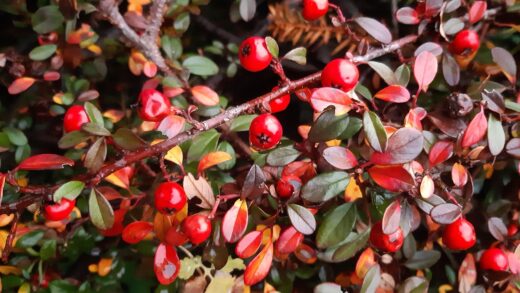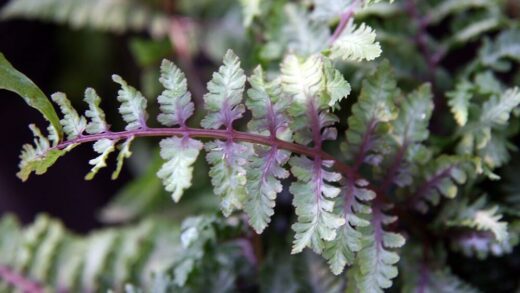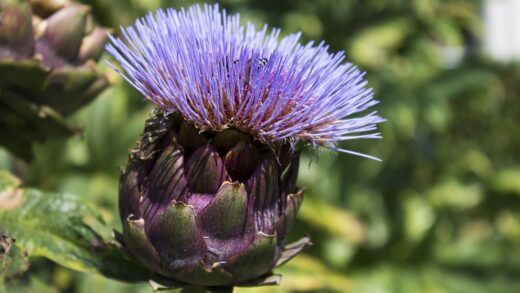The act of pruning an Atlas cedar should be approached with a sense of reverence and restraint, as this is a tree that largely thrives on minimal intervention. Its natural form is one of architectural grace and beauty, and in most cases, the best pruning strategy is to do as little as possible. However, there are specific situations where thoughtful, well-executed cuts are necessary to maintain the tree’s health, safety, and structural integrity. Understanding when and why to prune, and more importantly, what not to do, is the key to ensuring your cedar remains a majestic and unspoiled feature in the landscape for its entire life.
The primary reason to ever prune an Atlas cedar is to remove what can be referred to as the three ‘D’s: dead, damaged, or diseased wood. This type of pruning is a matter of basic plant hygiene and can be done at any time of year whenever a problem is noticed. Removing a dead branch eliminates a potential pathway for decay to enter the main trunk. Cutting out a branch that was damaged in a storm prevents further tearing of the bark and creates a cleaner wound that the tree can heal more effectively. Excising a diseased branch helps to stop the spread of the pathogen to other parts of the tree.
Beyond basic cleanup, pruning may occasionally be necessary to correct structural flaws, particularly in a young tree. This could involve removing a competing central leader to encourage a single, strong trunk, which is essential for the long-term stability of the tree. It might also mean removing a branch that is growing at a very narrow, acute angle to the trunk. These weak “V-shaped” crotches are prone to splitting as the tree matures and the branch gains weight, so removing them early is a sound preventative measure.
A third valid reason for pruning is to provide clearance. As a tree matures, its lower branches may begin to interfere with walkways, driveways, or encroach upon a building. In these instances, selective removal of the problematic lower limbs, a process known as “limbing up” or “crown lifting,” can be performed. This should be done gradually over several years, rather than removing many large branches at once, which can be a significant shock to the tree. The goal is to remove only what is absolutely necessary to achieve the required clearance.
What you must almost never do is attempt to reduce the overall size of an Atlas cedar by shearing it or “topping” it. These trees have a specific growth pattern, with a central leader and whorled branches, and cutting into this structure indiscriminately will permanently destroy its natural form. Topping the main leader is particularly destructive, as it invites decay and results in a proliferation of weak, unsightly shoots that are poorly attached to the trunk. If the mature size of the tree is a concern, the only correct solution is to have chosen a smaller-growing cultivar or a different species from the outset.
More articles on this topic
The best time for pruning
The timing of your pruning cuts can have a significant impact on the tree’s response and its ability to heal. For the vast majority of pruning tasks on an Atlas cedar, the ideal time is during the dormant season, typically in late winter or very early spring before any new growth begins. Pruning during dormancy minimizes the stress on the tree, as it is not actively growing and its metabolic processes are slow. It also reduces the flow of sap from the cuts, which can attract insect pests if done during the active growing season.
Another advantage of dormant-season pruning is that the tree’s structure is fully visible without being obscured by new, leafy growth. This makes it much easier to identify any structural issues, such as crossing branches or weak attachments, that need to be addressed. You can clearly see the “skeleton” of the tree and make more informed decisions about which branches to remove to improve its overall form and long-term health.
The one exception to the “prune in dormancy” rule is the removal of dead, damaged, or diseased wood. This type of corrective pruning can and should be done as soon as the problem is identified, regardless of the time of year. A broken branch left hanging after a summer storm, for example, poses a potential hazard and should be removed promptly and safely. Similarly, a branch showing active signs of a fungal canker should be excised immediately to prevent the disease from spreading.
You should strictly avoid any significant pruning during two key periods: during the spring flush of new growth and in the late autumn. Pruning while the tree is actively pushing out new, tender shoots can divert energy from this critical process and weaken the tree. Pruning in late autumn is also ill-advised because it can stimulate a late-season flush of new growth that will not have sufficient time to harden off before the arrival of freezing winter temperatures, making it highly susceptible to frost damage.
More articles on this topic
Essential pruning techniques
When it comes to pruning an Atlas cedar, using the correct techniques is crucial to ensure clean cuts that heal properly. For removing any branch, the “three-cut method” is the gold standard for preventing bark tearing, especially on branches more than an inch in diameter. The first cut is an undercut, made about a foot away from the trunk, cutting about a third of the way through the branch from the bottom up. The second cut is made an inch or two further out from the first cut, cutting all the way through the branch from the top down. This removes the weight of the branch safely. The final, third cut is made to remove the remaining stub, cutting just outside the branch collar.
The branch collar is a slightly swollen area of trunk tissue located at the base of a branch. It is critically important to identify this collar and to make your final pruning cut just outside of it, without damaging it in any way. The branch collar contains specialized cells that are responsible for closing over and sealing the pruning wound. If you cut the collar off (a “flush cut”), you create a much larger wound that the tree cannot effectively heal, leaving it vulnerable to decay and disease for years to come.
For smaller branches, a single, clean cut with sharp pruners or loppers will suffice, but the principle of avoiding the branch collar remains the same. Always use tools that are appropriately sized for the branch you are cutting to avoid struggling and making a ragged, damaging cut. Furthermore, your tools should always be sharp and clean. A sharp blade makes a smooth cut that heals more quickly, while cleaning your tools with rubbing alcohol between cuts helps to prevent the spread of diseases from one part of the tree to another, or from one tree to another.
After making a proper pruning cut, it is generally not recommended to apply any kind of pruning paint or wound dressing. Research has shown that these products are not necessary and can actually hinder the tree’s natural healing process by trapping moisture and creating a favorable environment for fungal growth. A clean cut made in the right place is the best way to allow the tree to use its own natural defenses to compartmentalize and seal the wound effectively.
Pruning for structure and health
Pruning for structure is most effective when the Atlas cedar is young and its branches are small and easy to manage. The primary goal during this phase is to establish a single, dominant central leader. If two or more competing leaders (codominant stems) develop, they create a weak point in the tree’s structure that is very likely to split apart as the tree grows. To correct this, identify the strongest, straightest, and most central leader and remove the competing ones entirely.
Another aspect of structural pruning involves managing branch spacing and arrangement. Ideally, you want to encourage branches that are well-spaced both vertically and radially around the trunk. If you see multiple branches emerging from the same point on the trunk, or branches that are growing too close together, it is wise to remove some of them to improve the tree’s long-term structure. You should also remove any branches that are rubbing against each other or growing back in towards the center of the tree.
As the tree matures, health-related pruning becomes the main focus. This involves the regular removal of any dead or dying branches. Deadwood provides no benefit to the tree and can be a safety hazard as it may break and fall. It also serves as an entry point and habitat for wood-boring insects and decay fungi. By regularly cleaning out deadwood, you not only improve the tree’s appearance but also enhance its overall health and safety.
Crown thinning is a more advanced technique that should only be performed if absolutely necessary and preferably by a certified arborist. This involves the selective removal of small, live branches from the outer canopy to reduce wind resistance and improve light penetration and air circulation. This is not about reducing the size of the tree but rather about reducing the density of the foliage. For an Atlas cedar, this should be done very sparingly, as over-thinning can ruin the tree’s dense, majestic appearance.
What to avoid: common pruning mistakes
The most catastrophic pruning mistake you can make with an Atlas cedar is “topping.” This is the practice of indiscriminately cutting the main vertical leader and the tops of the main branches to reduce the tree’s height. This practice is extremely harmful, as it removes the tree’s apical meristem, which regulates its growth. The tree responds by sending up a thicket of weak, vertically oriented shoots just below the cut. These shoots are poorly attached and prone to breaking, creating a tree that is both ugly and dangerous. Topping a cedar effectively destroys its natural form forever.
Another common mistake is over-pruning, or removing too much of the tree’s live canopy at one time. A general rule of thumb is to never remove more than 25 percent of a tree’s living foliage in a single year. The leaves (or in this case, needles) are the tree’s food factories, and removing too many of them can severely stress the tree by robbing it of its ability to produce energy. This is especially true for mature trees, which are less tolerant of heavy pruning than young ones. Pruning should always be a gradual process, spread out over several years if significant work is needed.
Making flush cuts, as mentioned earlier, is a pervasive error that has long-term negative consequences. Cutting off the branch collar removes the tree’s ability to heal the wound properly. This mistake is often made with the misguided intention of making the trunk look “clean” and smooth. However, the small stub left behind by a proper cut just outside the collar will eventually be enveloped by wound wood, resulting in a much healthier, stronger tree. Always locate the branch collar and respect it.
Finally, avoid the temptation to shear an Atlas cedar into an artificial shape, like a hedge or a poodle-like pom-pom. While some conifers respond well to this type of treatment, the Atlas cedar does not. Its natural, tiered, and slightly irregular branching habit is a core part of its beauty. Shearing ignores this natural growth pattern, leading to a dense outer shell of foliage that shades out the interior of the tree, causing it to become bare and hollow. This practice ruins the tree’s character and often leads to a decline in its health over time.


















